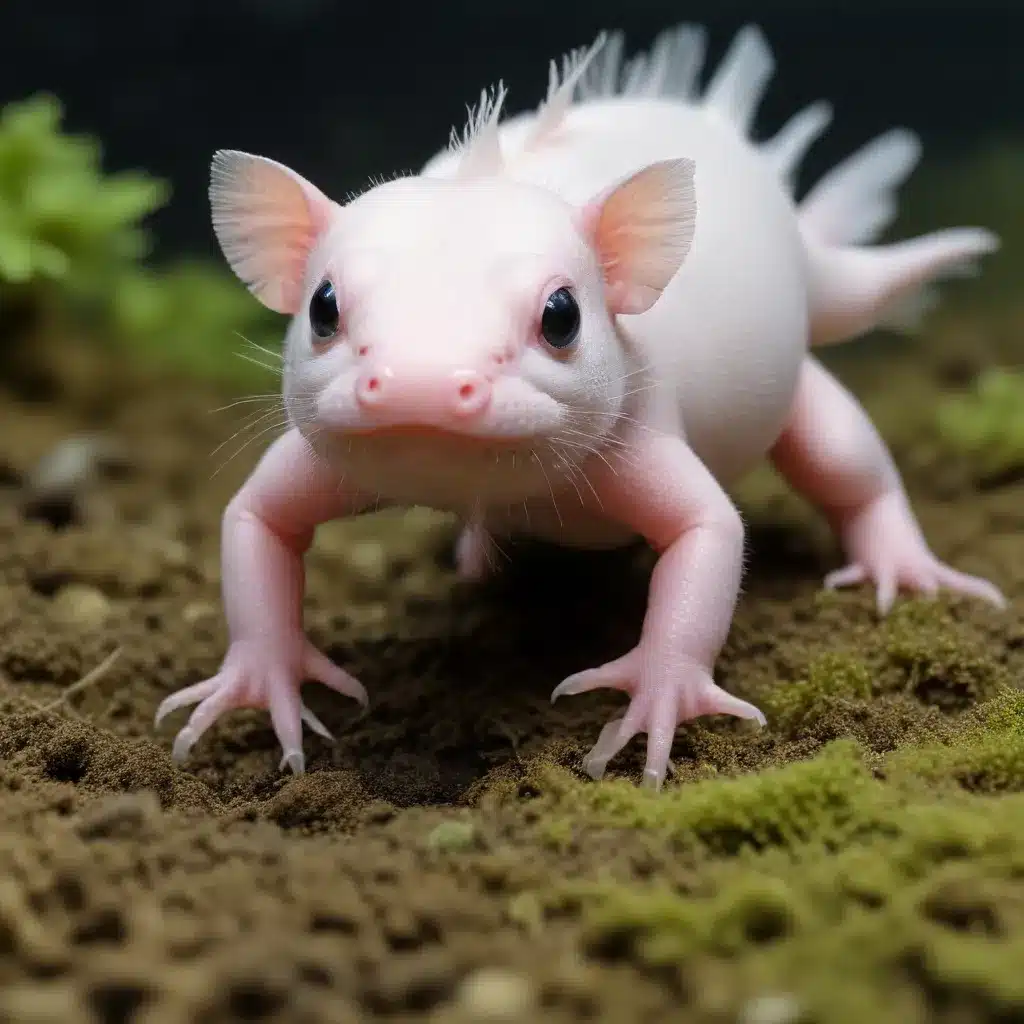
Safeguarding Mexico’s Iconic Salamander: Lessons from Habitat Restoration and Conservation Efforts
In the heart of Mexico City, a unique amphibian species faces an uncertain future. The Mexican axolotl (Ambystoma mexicanum), a critically endangered salamander endemic to the Xochimilco wetlands, has captured the imagination of both local and global audiences. Yet, as urbanization and environmental degradation threaten its native habitat, researchers and conservationists are racing against time to find innovative solutions to protect this iconic creature.
The Plight of the Axolotl
Once abundant in the high-altitude lakes surrounding Mexico City, the axolotl population has plummeted over the past decade, with only an estimated 50 to 1,000 individuals remaining in the wild. This drastic decline can be attributed to a perfect storm of threats, including water pollution, the introduction of invasive species, and, most significantly, the loss of their unique wetland habitat.
As the Xochimilco canals and chinampas (floating agricultural islands) have been degraded or abandoned, the axolotls’ delicate ecosystem has been pushed to the brink. Recognizing the urgent need for action, researchers and community advocates have turned their attention to exploring alternative paths for axolotl conservation.
Exploring Restored and Artificial Wetlands
In a recent study published on the bioRxiv preprint server, a team of researchers from the National Autonomous University of Mexico (UNAM) evaluated the viability of restored and artificial wetlands as potential havens for captive-bred axolotls. The study, titled “Movement ecology of captive-bred axolotls in restored and artificial wetlands,” provides valuable insights into the salamanders’ behavior and adaptability in these novel environments.
Using VHF telemetry, the researchers tracked the movements of captive-bred axolotls released into two distinct sites: the restored wetlands of La Cantera Oriente (LCO) and the existing Xochimilco canals. The findings revealed some intriguing patterns:
-
Survival and Foraging Success: Captive-bred axolotls were able to survive and forage successfully in both the restored and artificial wetland environments, indicating their ability to adapt to these newly created habitats.
-
Movement Patterns and Home Ranges: Axolotls in the LCO wetlands exhibited larger home ranges and traveled greater daily distances compared to those in the Xochimilco canals. This suggests that the restored environment may provide more favorable conditions for the salamanders’ movements and habitat exploration.
-
Thermal Preferences: The researchers identified a quadratic relationship between water temperature and axolotl movement, indicating a narrow thermal preference range for the species. This insight underscores the importance of maintaining appropriate water temperatures in both natural and artificial wetlands to support the axolotls’ well-being.
-
Age and Sex Influence: The study found that younger axolotls and females tended to travel greater distances, a finding that could inform targeted conservation strategies based on the salamanders’ life stages and gender-specific behaviors.
-
Predation Risks: While the majority of the captive-bred axolotls adapted well to their new environments, two individuals were lost to avian predation in the Xochimilco canals after the study concluded. This highlights the need for predator awareness training and ongoing monitoring to enhance the survival outcomes for released axolotls.
Integrating Restored and Artificial Wetlands
The findings of this study suggest that artificial wetlands, such as the LCO site, hold promise for axolotl conservation. By providing stable environmental conditions that may mitigate the impacts of habitat degradation and climate change, these created habitats could serve as valuable complements to the restoration of the Xochimilco ecosystem.
“These findings highlight the potential of artificial wetlands like LCO for axolotl conservation by providing stable conditions that may mitigate habitat degradation and climate change impacts,” the researchers note in their study.
Community-Driven Restoration Efforts
Alongside the scientific research, community-led initiatives in Xochimilco are also playing a crucial role in restoring the traditional chinampas and reviving the axolotl’s natural habitat. One such effort is spearheaded by Dionisio Eslava Sandoval, a Xochimilco native and community organizer.
Sandoval has been working tirelessly to restore the pre-Hispanic chinampas, which provide an ideal environment for axolotls. These floating agricultural islands, surrounded by narrow canals, act as natural filters, removing pollutants and creating a thriving ecosystem. Through his efforts, Sandoval has transformed a former “tremendous garbage dump” into a flourishing farm, producing a variety of crops while also providing a new home for 11 captive-bred axolotls.
Inspired by Sandoval’s success, other local landowners and farmers have followed suit, releasing a total of at least 240 additional axolotls into the interconnected ditches and canals of the restored chinampas. This grassroots movement, supported by the Chinampa Refuge Project managed by the UNAM team, demonstrates the power of community engagement and traditional knowledge in safeguarding the axolotl’s future.
As Luis Zambrano, an axolotl expert at UNAM, emphasizes, “We need the habitat” – a sentiment that echoes the urgent need for comprehensive habitat restoration and conservation efforts. By integrating native and artificial wetlands into a holistic strategy, researchers and community advocates are working to create a more sustainable future for the iconic axolotl.
Embracing the Axolotl’s Legacy
The axolotl’s plight has captured the attention of both the Mexican public and the global community. From the quirky axolotl-themed labels on Monstruo de Agua’s craft beers to the axolotl’s appearance on the new 50 peso bill, this unique salamander has become a symbol of Mexican heritage and the need for environmental stewardship.
As the conservation efforts continue, it is clear that the axolotl’s survival is not just about protecting a single species, but rather about preserving the delicate balance of an entire ecosystem. By restoring the Xochimilco wetlands and creating innovative artificial habitats, researchers and community members are working to ensure that the axolotl’s legacy endures for generations to come.
To learn more about the Joint Action for Water initiative and its commitment to sustainable water and sanitation solutions, please visit https://jointactionforwater.org/.

